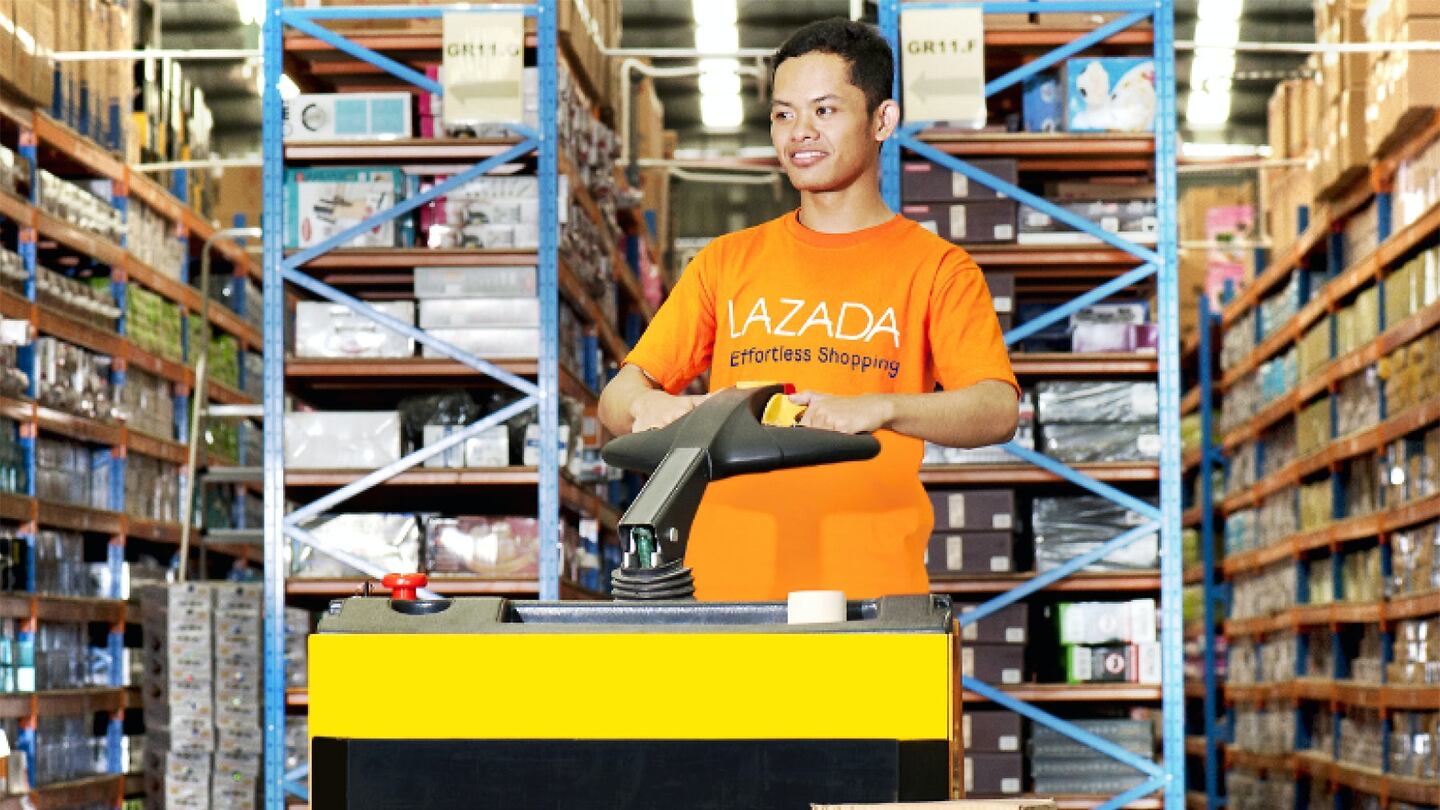
The Business of Fashion
Agenda-setting intelligence, analysis and advice for the global fashion community.

Agenda-setting intelligence, analysis and advice for the global fashion community.

SINGAPORE — Alibaba Group Holding Ltd. and Amazon.com Inc. are about to clash in Southeast Asia. And Lazada Group SA, which Alibaba bought this year for $1 billion, will be right at the heart of that conflict.
Southeast Asia’s largest e-commerce site is rolling out a series of initiatives in anticipation of the US giant’s entry next year. It’s expanding its delivery network within the region and beyond, via partners in China and Korea. It is on the prowl for investments and acquisitions to shore up its supply chain. And it intends to delve deeper into online groceries in 2017, a notoriously difficult market it got into by buying RedMart.
That is because Lazada's home turf is shaping up to be the next battleground for Alibaba co-founder Jack Ma and Amazon chief executive officer Jeff Bezos. While still lacking the transport and payments infrastructure crucial to the widespread adoption of e-commerce, the region has become the world's fastest-growing internet arena, with a combined populace of 620 million people getting more comfortable with online shopping.
“It’s a jungle out here,” Lazada chief executive officer Maximilian Bittner said when asked about an incursion by the world’s largest online retailer. “We are looking forward to seeing how they will differentiate themselves.”
ADVERTISEMENT
Now that Alibaba has established its dominance of China and Amazon has taken the lead in the US, both are looking to make their mark overseas. The American company in particular has made huge strides in India.
Alibaba took control of Lazada from Rocket Internet in what remains its largest overseas move to date. The company Bittner started in 2012 is now pivotal to quickening the Chinese e-commerce giant’s so-far tentative steps abroad, and fulfilling Ma’s ambitions of becoming a truly global business.
Amazon meanwhile has not yet voiced its intentions for Southeast Asia, but the industry expectation is that its constant quest for growth will lead it there by 2017. Techcrunch reported in November the company is likely to bring its Prime delivery service and Amazon Fresh to Singapore in the first quarter, using the wealthy, cyber-savvy city state as a springboard to the rest of the region.
It is demonstrated a willingness to spend on building a local presence, and an ability to thrive in the difficult, fragmented market conditions that characterise Southeast Asia. Indeed, the US company was among the investors with whom RedMart negotiated to sell its business, said the startup’s co-founder and chief executive officer, Roger Egan. He wouldn’t elaborate and Amazon representatives did not respond to requests for comment.
“Both of them will want to dominate Southeast Asia,” said Thompson Teo, an associate professor at NUS Business School. “Alibaba has acquired companies to shorten the learning curve and grow faster. It’s going to give Amazon a good fight.”
Alibaba’s experience quashing Amazon in China may yet prove indispensable. Central to Lazada’s effort is building a system that can deliver goods into Southeast Asia from merchants in other countries, a cross-border model akin to Alibaba’s. The region is now split between a mere handful of operators dominant in certain areas, including MatahariMall and Tokopedia in Indonesia and unicorn startup Garena.
Lazada covers six countries — Indonesia, Malaysia, the Philippines, Singapore, Thailand and Vietnam — and runs 12 warehouses and 92 distribution centres from which it conveys goods directly to buyers. It counts Kerry Logistics Network Ltd. and DHL in Thailand and JNE Express in Indonesia among its more than 100 logistics partners. In recent months, it has also teamed up with China's state postal service and CJ Korea Express Corp. In September, Lazada's volume in Indonesia grew 2.5 times from a year ago, Bittner said.
“We see ourselves as a logistics control tower in Southeast Asia,” he said. “We are looking at building a better, more sophisticated logistics capability. The world is shifting toward borderless e-commerce system and that’s very much the vision of Alibaba and us.”
ADVERTISEMENT
Now that RedMart’s given it a foothold in Singapore, Lazada also plans to begin selling groceries online in one of the capital cities of Malaysia, Indonesia or Thailand as early as the second half of 2017, he said.
RedMart has more than 150 trucks ferrying an average of 22 food items from chocolate to frozen dumplings per order. It plans to cut delivery times to four to six hours (from mostly next-day) by the end of the first half of 2017, Egan said. By the second half, the company will offer an express service, shipping groceries within an hour or two of ordering online, he said.
“Grocery is seen as notoriously difficult one to do online, but it’s the largest market representing 60 percent of overall Southeast Asian retail,” Egan said. “Customers are much more engaged. They visit twice a week so the frequency allows you to develop a deep relationship with customers.”
By Yoolim Lee; editors: Robert Fenner, Edwin Chan and Reed Stevenson.
Brands are using them for design tasks, in their marketing, on their e-commerce sites and in augmented-reality experiences such as virtual try-on, with more applications still emerging.
Brands including LVMH’s Fred, TAG Heuer and Prada, whose lab-grown diamond supplier Snow speaks for the first time, have all unveiled products with man-made stones as they look to technology for new creative possibilities.
Social networks are being blamed for the worrying decline in young people’s mental health. Brands may not think about the matter much, but they’re part of the content stream that keeps them hooked.
After the bag initially proved popular with Gen-Z consumers, the brand used a mix of hard numbers and qualitative data – including “shopalongs” with young customers – to make the most of its accessory’s viral moment.